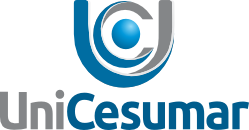TEACHERS´ PERCEPTION ON ACCESSIBILITY FOR STUDENTS WITH AUTISM IN HIGHER EDUCATION
Abstract
This article aims to analyze the conditions of accessibility of students with autism in higher education from the teacher's perception. The qualitative research, used the online questionnaire as an information collection technique, with open and closed questions. Ten teachers took part who had students with autism enrolled in their undergraduate courses. The analysis of the data used content analysis. The results showed that, teacher’s actions aimed at accessibility for students with autism focus on methodological accessibility and less on the attitudinal. They highlight the importance of diagnosis and the tendency to have it as a determinant of pedagogical action. They denounce the conditions imposed by universities, such as the high number of students per class and the daily demands at the institution, which hinder teaching work.References
ANDERSON, A. H.; STEPHENSON, J.; CARTER, M. A systematic literature review of the experiences and supports of students with autism spectrum disorder in post-secondary education. Research in Autism Spectrum Disorders, [s. l.], v. 39, p. 33-53, 2017. Disponível em: http://www.sciencedirect.com/science/article/pii/S1750946717300521. Acesso em: 27 maio 2017.
APA – AMERICAN PSYCHIATRIC ASSOCIATION. Manual de transtornos mentais DSM-5. Porto Alegre: Artmed, 2014. v. 1. Disponível em: http://c026204.cdn.sapo.io/1/c026204/cld-file/1426522730/6d77c9965e17b15/b37dfc58aad8cd477904b9bb2ba8a75b/obaudoeducador/2015/DSM V.pdf. Acesso em: 27 maio. 2017.
ARAI, A. A.; NUERNBERG, A. H. Investigando as barreiras e facilitadores para inclusão dos estudantes com autismo no ensino superior. Florianópolis, 2016.
ASHBY, C. Disability studies and inclusive teacher preparation: a socially just path for teacher education. Research and Practice for Persons with Severe Disabilities, v. 37, n. 2, p. 89-99, 2012. Disponível em: http://journals.sagepub.com/doi/10.1177/154079691203700204. Acesso em: 27 set. 2019.
BOCK, G. L. K.; GESSER, M.; NUERNBERG, A. H. O desenho universal para aprendizagem como um princípio do cuidado. Revista Educação Especial, Santa Maria, v. 32 (Publicação Contínua), p. 1-18, 2019. Disponível em: https://periodicos.ufsm.br/educacaoespecial/article/view/34504/html_1. Acesso em: 20 jun. 2017.
BRASIL. Lei no 13.146, de 06 de julho de 2015. Institui a Lei Brasileira de Inclusão da Pessoa com Deficiência (Estatuto da Pessoa com Deficiência). Diário Oficial da União, Brasília, DF, 07 jul. 2015, p. 2. Disponível em: http://www.planalto.gov.br/ccivil_03/_ato2015-2018/2015/lei/l13146.htm. Acesso em: 28 maio 2017.
CAMPBELL, F. K. Inciting Legal Fictions: "Disability's” date with Ontology and the Ableist Body of Law. Griffith University, v. 10, n. 1, p. 42-62, 2001. Disponível em: http://hdl.handle.net/10072/3714. Acesso em: 23 abr. 2018.
DAVIS, L. J. Constructing normalcy: the bell curve, the novel, and the invention of the disabled body in the nineteenth century. In: DAVIS, Lennard J. The disability studies reader. 2. ed. New York: Routledge, 2006. p. 3-16.
DINIZ, Debora. O que é deficiência. São Paulo: Brasiliense, 2007. (Coleção Primeiros Passos).
GARCIA, R. de A. B. Acessibilidade no ensino superior na perspectiva de alunos com deficiência: contribuições da Psicologia Escolar a luz da Teoria Histórico-Cultural. 2016. Dissertação (Mestrado em Psicologia) – Universidade Estadual de Maringá, Maringá/PR, 2016.
GAUDENZI, P.; ORTEGA, F. Problematizando o conceito de deficiência a partir das noções de autonomia e normalidade. Ciência & Saúde Coletiva, v. 21, n. 10, p. 3061-3070, 2016. Disponível em: http://www.scielo.br/scielo.php?script=sci_arttext&pid=S1413-81232016001003061&lng=pt&tlng=pt. Acesso em: 11 maio 2019.
GELBAR, N.; SMITH, I.; REICHOW, B. Systematic review of articles describing experience and supports of individuals with autism enrolled in college and university programs. Journal of Autism and Developmental Disorders, v. 44, n. 10, p. 2593-2601, 2014. Disponível em: http://www.ncbi.nlm.nih.gov/pubmed/24816943. Acesso em: 27 maio 2017.
MASATAKA, N. Implications of the idea of neurodiversity for understanding the origins of developmental disorders. Physics of Life Reviews, v. 20, p. 85–108, 2017. Disponível em: http://linkinghub.elsevier.com/retrieve/pii/S1571064516301361 . Acesso em: 1 maio. 2018.
MASCARENHAS, L. T.; MORAES, M. Desafios e invenções tecidas entre formações de professores e inclusão nas escolas públicas regulares brasileiras. In: MORAES, Marcia;
MARTINS, Bruno Sena; FONTES, Fernando; MASCARENHAS, Luiza Teles. (orgs.). Deficiência em questão: para uma crise da normalidade. Rio de Janeiro: NAU, 2017. p. 10-20.
ORTEGA, F. Deficiência, autismo e neurodiversidade. Ciência & Saúde Coletiva, v. 14, n. 1, p. 67-77, 2009. Disponível em: http://www.scielo.br/scielo.php?script=sci_arttext&pid=S1413-81232009000100012. Acesso em: 09 jun. 2017.
POKER, R. B. et al. Inclusão no ensino superior: a percepção de docentes de uma instituição pública do interior do estado de São Paulo. Psicologia Escolar e Educacional, SP. Edição especial, p. 127–134, 2018. Disponível em: http://dx.doi.org/10.1590/2175-3539/2018/010. Acesso em: 24 jul. 2018.
ROBERTSON, S. M. Neurodiversity, quality of life, and autistic adults: shifting research and professional focuses onto real-life challenges. Disability Studies Quarterly, v. 30, n. 1, p. 21, 2010. Disponível em: http://dsq-sds.org/article/view/1069/1234. Acesso em: 09 jun. 2017.
RUIZ-OLABUÉNAGA, J. I. Metodología de la investigación cualitativa. 5. ed. Bilbao: Universidad de Deusto, 2012
STRAND, L. R. Charting relations between intersectionality theory and the neurodiversity paradigm. Disability Studies Quarterly, [s. l.], v. 37, n. 2, p. 21, 2017. Disponível em: http://dsq-sds.org/article/view/5374. Acesso em 27 dez. 2017.
TOOR, N.; HANLEY, T.; HEBRON, J. The facilitators, obstacles and needs of individuals with autism spectrum conditions accessing further and higher education: a systematic review. Journal of Psychologists and Counsellors in Schools, v. 26, n. 2, p. 166–190, 2016. Disponível em: https://www.cambridge.org/core/product/identifier/S2055636516000215/type/journal_article. Acesso em 27 dez. 2017.
Os direitos autorais pertencem exclusivamente aos autores. Os direitos de licenciamento utilizado pelo periódico é a licença Creative Commons Attribution
 Creative Commons Atribuição 4.0 Internacional. São permitidos o compartilhamento (cópia e distribuição do material em qualquer meio ou formato) e adaptação (remixar, transformar, e criar a partir do trabalho, mesmo para fins comerciais), desde que lhe atribuam o devido crédito pela criação original.
Creative Commons Atribuição 4.0 Internacional. São permitidos o compartilhamento (cópia e distribuição do material em qualquer meio ou formato) e adaptação (remixar, transformar, e criar a partir do trabalho, mesmo para fins comerciais), desde que lhe atribuam o devido crédito pela criação original.

